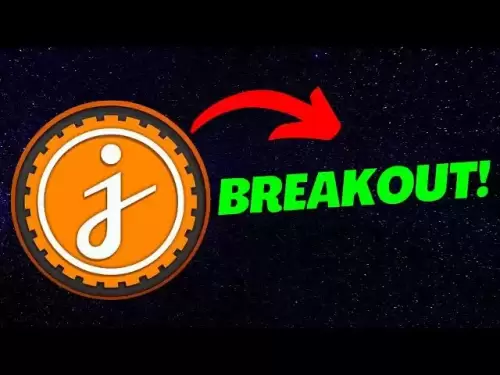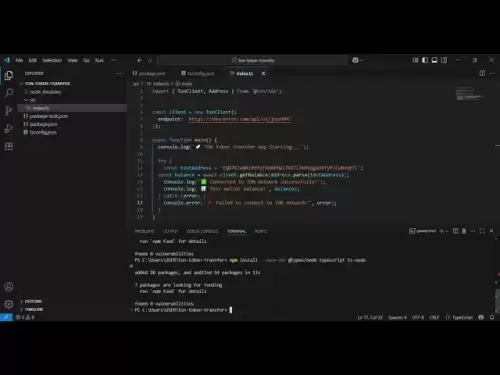-
 Bitcoin
Bitcoin $118,841.1054
1.02% -
 Ethereum
Ethereum $3,364.2689
7.44% -
 XRP
XRP $3.0337
3.93% -
 Tether USDt
Tether USDt $1.0004
0.04% -
 BNB
BNB $708.2059
2.49% -
 Solana
Solana $173.2385
5.74% -
 USDC
USDC $0.9999
-0.01% -
 Dogecoin
Dogecoin $0.2121
6.85% -
 TRON
TRON $0.3090
2.81% -
 Cardano
Cardano $0.7628
2.25% -
 Hyperliquid
Hyperliquid $46.8391
-2.08% -
 Stellar
Stellar $0.4537
0.15% -
 Sui
Sui $3.9529
-2.88% -
 Chainlink
Chainlink $16.6414
3.72% -
 Hedera
Hedera $0.2354
1.52% -
 Bitcoin Cash
Bitcoin Cash $499.1285
0.43% -
 Avalanche
Avalanche $22.6400
0.57% -
 Shiba Inu
Shiba Inu $0.0...01438
4.88% -
 UNUS SED LEO
UNUS SED LEO $8.8507
-0.64% -
 Toncoin
Toncoin $3.1498
2.35% -
 Litecoin
Litecoin $97.4954
1.21% -
 Polkadot
Polkadot $4.1541
1.50% -
 Monero
Monero $331.4406
-1.03% -
 Pepe
Pepe $0.0...01350
5.24% -
 Uniswap
Uniswap $8.9103
-5.01% -
 Bitget Token
Bitget Token $4.7540
4.51% -
 Dai
Dai $0.9999
-0.02% -
 Ethena USDe
Ethena USDe $1.0008
0.00% -
 Aave
Aave $322.3328
-1.63% -
 Bittensor
Bittensor $431.8026
-0.50%
What Is the Byzantine Generals Problem?
In the Byzantine Generals Problem, loyal generals facing unreliable communication must devise a consensus protocol to coordinate their attack despite the potential presence of traitors.
Nov 01, 2024 at 06:18 pm

The Byzantine Generals Problem
1. Origins and Background:
The Byzantine Generals Problem (BGP) is a classic computer science problem in the field of distributed computing. It was first formulated in the 1970s by Leslie Lamport and Robert Shostak to illustrate the challenges of achieving consensus among multiple independent entities communicating over unreliable channels.
2. Definition:
The BGP involves a set of Byzantine generals who are besieging an enemy city. They must coordinate their attack, but the communication channels between them might be subject to hostile attack that could cause message delays, loss, or even forgery.
3. Assumptions:
The BGP assumes that:
- The number of generals is at least 3.
- A majority of the generals (more than half) are loyal and wish to attack.
- A traitorous minority may exist and could try to sabotage the attack.
- Communication channels are unreliable and can fail at any time.
4. The Problem Statement:
The BGP is to design a protocol that allows the loyal generals to reach a consensus on whether to attack, despite the potential presence of traitors and communication failures.
5. Solution:
A solution to the BGP requires the use of a "Byzantine fault tolerance" algorithm. Such an algorithm guarantees consensus even if up to one-third of the generals are traitors. A well-known BGP solution is the Paxos algorithm.
6. Implications:
The BGP has broad implications in distributed computing, including:
- Ensuring reliable communication in networks with unreliable channels.
- Achieving consensus in blockchain and distributed ledger technologies.
- Providing fault tolerance in mission-critical systems.
7. Relevance in Real-World Applications:
The BGP is relevant in practical applications such as:
- Airplane control systems where multiple computers receive navigation instructions.
- Fault-tolerant spacecraft systems that require consensus for critical operations.
- Distributed banking systems that rely on accuracy and integrity of transactions.
Disclaimer:info@kdj.com
The information provided is not trading advice. kdj.com does not assume any responsibility for any investments made based on the information provided in this article. Cryptocurrencies are highly volatile and it is highly recommended that you invest with caution after thorough research!
If you believe that the content used on this website infringes your copyright, please contact us immediately (info@kdj.com) and we will delete it promptly.
- Bitcoin Trading Volume in Q2 2025: A New York Minute
- 2025-07-17 14:30:12
- Bitcoin, SpacePay, and Your Cappuccino: The Future of Crypto Payments is Here!
- 2025-07-17 14:30:12
- Coinbase's 'Base App': Your All-in-One Crypto Hub?
- 2025-07-17 12:30:13
- Raydium, RAY Repurchase, and Circulation: A Solana Ecosystem Powerhouse
- 2025-07-17 12:30:13
- Bitcoin, Ethereum, Market Cap: Decoding the Crypto Buzz
- 2025-07-17 12:50:12
- Bitcoin Whale Wallets: Navigating the Tides of Crypto Fortunes
- 2025-07-17 13:00:12
Related knowledge
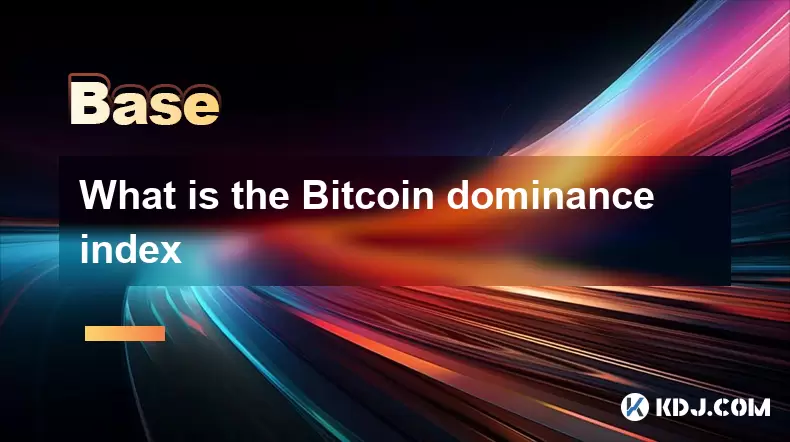
What is the Bitcoin dominance index
Jul 12,2025 at 10:35pm
Understanding the Bitcoin Dominance IndexThe Bitcoin Dominance Index, often abbreviated as BTC.D, is a metric used to measure Bitcoin's market capital...
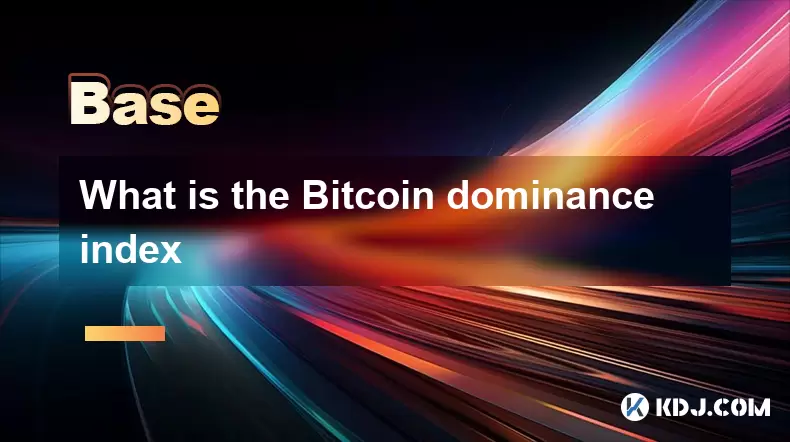
What is the Bitcoin dominance index
Jul 11,2025 at 04:29am
What is the Bitcoin Dominance Index?The Bitcoin Dominance Index is a metric used to gauge Bitcoin's market capitalization relative to the total market...
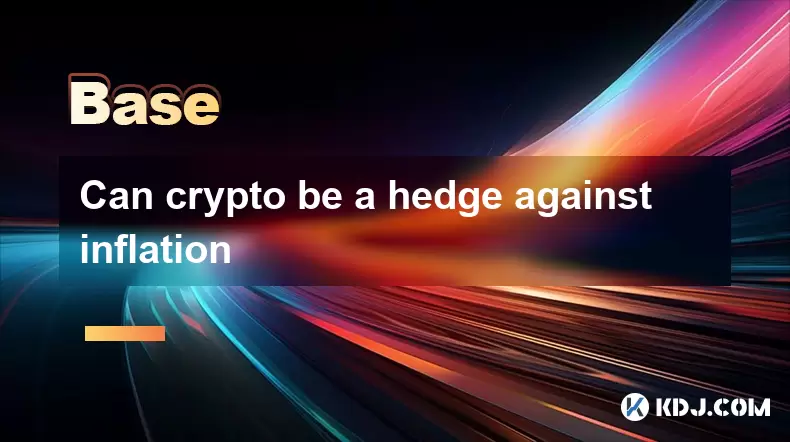
Can crypto be a hedge against inflation
Jul 14,2025 at 12:21am
Understanding the Concept of Hedging Against InflationInflation refers to the general increase in prices and fall in the purchasing value of money ove...
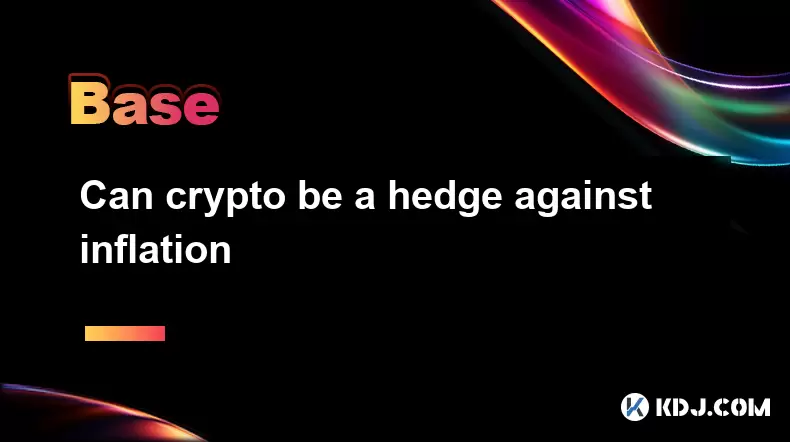
Can crypto be a hedge against inflation
Jul 12,2025 at 12:07pm
Understanding the Role of Blockchain in Decentralized Finance (DeFi)Blockchain technology serves as the backbone of decentralized finance, offering a ...
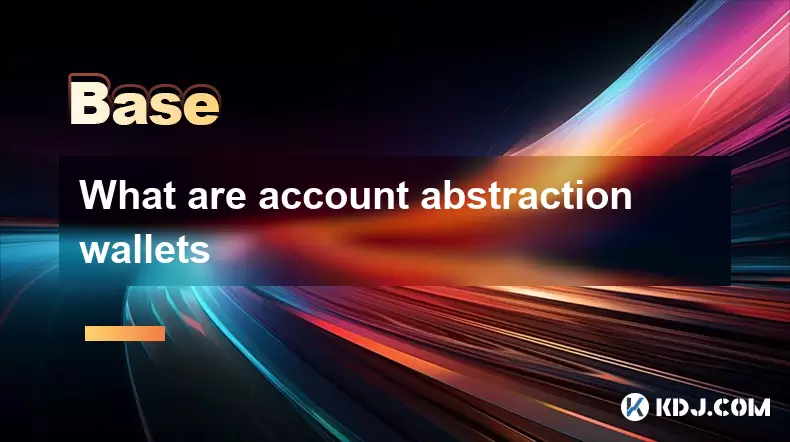
What are account abstraction wallets
Jul 13,2025 at 01:43am
Understanding the Concept of Account AbstractionAccount abstraction is a term frequently used in the Ethereum ecosystem, particularly within discussio...
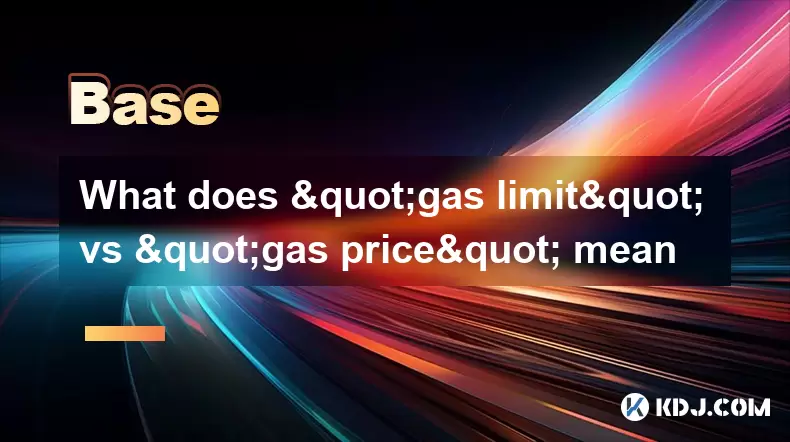
What does "gas limit" vs "gas price" mean
Jul 13,2025 at 04:00am
Understanding the Basics of Gas in Blockchain TransactionsIn the Ethereum and other EVM-compatible blockchains, every transaction requires computation...

What is the Bitcoin dominance index
Jul 12,2025 at 10:35pm
Understanding the Bitcoin Dominance IndexThe Bitcoin Dominance Index, often abbreviated as BTC.D, is a metric used to measure Bitcoin's market capital...

What is the Bitcoin dominance index
Jul 11,2025 at 04:29am
What is the Bitcoin Dominance Index?The Bitcoin Dominance Index is a metric used to gauge Bitcoin's market capitalization relative to the total market...

Can crypto be a hedge against inflation
Jul 14,2025 at 12:21am
Understanding the Concept of Hedging Against InflationInflation refers to the general increase in prices and fall in the purchasing value of money ove...

Can crypto be a hedge against inflation
Jul 12,2025 at 12:07pm
Understanding the Role of Blockchain in Decentralized Finance (DeFi)Blockchain technology serves as the backbone of decentralized finance, offering a ...

What are account abstraction wallets
Jul 13,2025 at 01:43am
Understanding the Concept of Account AbstractionAccount abstraction is a term frequently used in the Ethereum ecosystem, particularly within discussio...

What does "gas limit" vs "gas price" mean
Jul 13,2025 at 04:00am
Understanding the Basics of Gas in Blockchain TransactionsIn the Ethereum and other EVM-compatible blockchains, every transaction requires computation...
See all articles
























